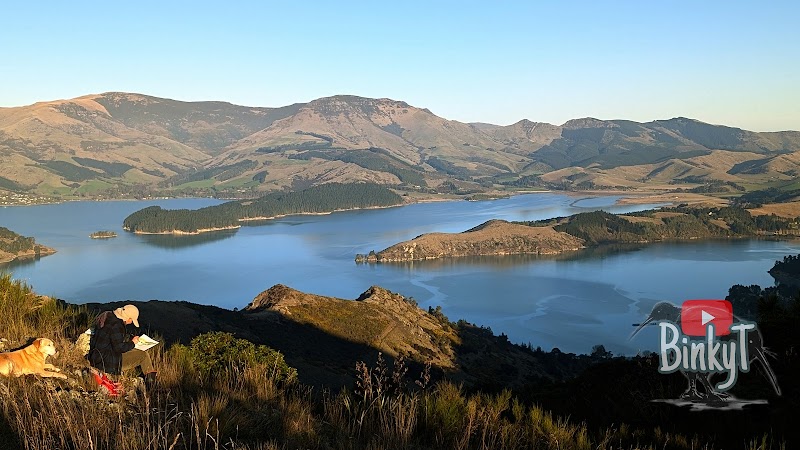Trekking Arthur's Pass: A Practical Guide to New Zealand’s Rugged Heart
Arthur's Pass offers hikers a raw encounter with Canterbury’s dramatic mountain landscapes and rich native flora and fauna. This guide equips you with practical advice and vivid descriptions to confidently explore one of New Zealand’s most compelling alpine trails.
Start Early to Beat Weather Shifts
Begin your hike early in the day to avoid afternoon storms and dense fog that can limit visibility and increase risk on exposed sections.
Use Sturdy Footwear
Rocky terrain and slippery river crossings demand solid boots with good ankle support to prevent injury and maintain grip.
Treat Water from Streams
Carry a water filter or purification tablets; while streams look clear, they may harbor bacteria or parasites.
Respect Kea Habits
Kea parrots are curious but can be destructive; keep food secured and do not feed them to avoid habituation or harm.
Trekking Arthur's Pass: A Practical Guide to New Zealand’s Rugged Heart
Arthur's Pass stands as a bold guardian of Canterbury’s wild interior, daring hikers to navigate its dramatic ridges and forested valleys. The trail carves through thick native beech forests where silver ferns flicker like watchful eyes, offering shelter to kea parrots that squawk and flap above, testing your resolve. The paths vary—gravel slopes slide beneath careful steps, rocky footholds challenge balance, and river crossings hint at nature’s raw insistence. Expect about 12 kilometers roundtrip for popular routes such as Avalanche Peak, with elevation gains around 1000 meters that push lungs and legs beyond casual limits.
Early on, streams whisper their urgency, pushing forward with icy spurts, urging you to keep pace. The flora changes constantly: moss carpets softening stones, alpine tussocks waving above the tree line, and wildflowers punctuating open clearings during the brief summer bloom. Wildlife isn’t shy here; the rare rock wren flits along cliff edges, and if you listen carefully, the distant honk of kea reminds you that these mountains are fiercely alive.
To prepare, choose footwear with solid grip—trail runners suffice if well-broken in, but hiking boots offer added ankle support on uneven terrain. Carry at least 2 liters of water; streams aren’t always reliable or safe for drinking without treatment. Start early mornings to dodge passing showers, common in this region, and to catch golden light spilling across the peaks. Layer your gear—weather shifts abruptly, and a waterproof outer shell is indispensable.
Arthur’s Pass demands respect: its weather can change rapidly, sun melts into rain, and the quiet can close in with sudden fog. Yet, this challenge fuels its appeal, inviting hikers to tread lightly and engage fully with a landscape that’s fiercely itself. This is adventure with a clear edge—the satisfaction lies not only in the views but in matching your pace to the mountain’s rhythm.
Nearby Trips
All Adventures
Boat Charters
Water Activities
Adventures near Christchurch
Discover the unique and memorable adventures that make Christchurch special.
Frequently Asked Questions
What is the best trail for first-timers in Arthur's Pass?
The Arthur's Pass Walking Track and Devil's Punchbowl Waterfall walk are accessible options offering spectacular scenery without overwhelming elevation. Avalanche Peak is more challenging and best suited for experienced hikers.
Is it safe to drink water directly from streams on the trail?
No, it's recommended to treat water from streams by filtering or purifying, as even clean-looking water may contain harmful microorganisms.
How unpredictable is the weather in Arthur's Pass?
Weather shifts rapidly. Clear skies can quickly turn to fog or rain, especially in afternoons. Staying prepared with waterproof gear and starting hikes early is essential.
Are dogs allowed on the trails?
Dogs are not permitted in the Arthur's Pass National Park to protect native wildlife and fragile habitats.
What wildlife might I encounter?
Look for kea parrots, fantails, riflemen birds, and with luck, the elusive rock wren. Keep a respectful distance and secure food against kea curiosity.
Can I camp in Arthur's Pass?
Yes, there are designated campgrounds nearby like Bealey Spur. Backcountry camping requires a permit and careful following of environmental guidelines.
Recommended Gear
Waterproof Hiking Boots
Protects feet and ankles over rocky and wet terrain; essential for stability and comfort.
Layered Clothing System
Allows quick adaptation to changing weather, from cool alpine mornings to warmer afternoons.
Water Filter or Purification Tablets
Ensures safe hydration when refilling from streams during the hike.
Trekking Poles
Helpful for balance and reducing leg strain on steep ascents and descents.
Local Insights
Hidden Gems
- "Horseshoe Lake Track – A quiet alternative route with peaceful wetlands and native birds."
- "Old Coach Road – Historic trail with fewer crowds and scenic valley views."
Wildlife
- "Kea parrots known for their intelligence and mischievous nature"
- "Rock wren, a rare alpine bird hard to spot but rewarding if seen"
History
"Arthur's Pass has long been a vital trans-Alpine route dating back to Maori use and later European explorers, with significant gold mining and railway heritage influencing the area."

